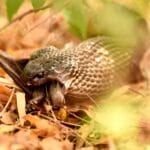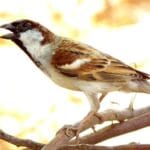Saker falcon is the largest falcon seen in the Indian Subcontinent. Due to its prowess as a hunter, it has been prized by humans for centuries, particularly by falconers.
Status
It has been uplisted in the IUCN Red List as Endangered because of the latest analysis which indicates rapid decline in the population. IUCN states “This negative trend is a result of a range of anthropogenic factors including electrocution on power lines, unsustainable capture for the falconry trade, as well as habitat degradation and the impacts of agrochemicals, and the rate of decline appears to be particularly severe in the species’s central Asian breeding grounds”
Identification
Saker Falcons are large brown coloured falcons. There are many subspecies of the Saker falcons however in India, we get to see 2 type of birds. The Ladakh population is often referred to as Altai Saker while which are dark brown coloured bird with rufous barring on the upperwings and the ones which we get to see in the Thar Desert are usually the nominate migratory subspecies which are relatively paler brown than the Altai Saker.

Saker falcon can be identified Dark upperparts and pale underparts with brown streaking in juvenile and tear drop markings in adults. It can be confused with similar looking species like Laggar Falcon and Juvenile Peregrine falcon. However by keen observation, following pointers can help in confirmation of the identification of saker.
- It has relatively less prominent moustachial stripe in comparison to Laggar& juvenile Peregrine
- It is more bulky and has broader body and wings in comparison to laggar and juvenile Peregrine
- Juvenile Peregrine has dark head, uniform vertical streaking on the underparts, prominent malar strip and longer more pointed dark wings while the Saker has pale head, more heavier and slightly rounded paler wings in comparison to the Peregrine.
- Laggar falcons are uniform dark brown usually with uniform unbarred tail and primaries while saker falcons have barred primaries and tail.

Distribution
In India, it is considered to be a rare bird with a small number of resident breeding population limited to Ladakh region and migratory birds seen ocassionally near the Himalayas and regularly in and around the Thar desert of Gujarat and Rajasthan.
Sightings in Rajasthan in last few years
- Jodbeed – Adult female – Mr.Nirav Bhatt ( Seen for 3 consecutive seasons 2014-15 by Mr.Hira Punjabi, 15-16 by Mr.Nirav Bhatt, 16-17 by Nirav Bhatt
- Desert National park – Adult bird – Mr.Hemant Dandekar (seen only once in Nov 2014)
- Jodbeed – Juvenile bird – Mr.Jay Shah seen only once Jan 2016
- Sambar Lake – Adult male with yellow footed green pigeon kill – Mr.Nirav Bhatt (Seen in 2019-20)
Prey
Sakers are physically adapted to hunting close to the ground in open terrain, combining rapid acceleration with high maneuverability, thus specializing on mid-sized diurnal terrestrial rodents like Desert Jird and Bandicoot. However they also predate on small to medium sized birds ranging from Larks to pigeons.
Importance
Saker falcons are adapted to survive in arid habitats and the sightings of Saker falcons in the area is an indicator of healthy desert ecosystem. Occurrence of such rare species of falcons in the state is of a great importance as far as ornithology is concerned. Extensive study of the thar desert can reveal more information of occurrence of more Saker falcons.
Banner Image By :- Hemant Dhadnekar










Informative, interesting and detailed article! Thank you!